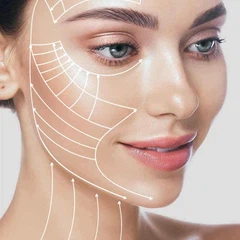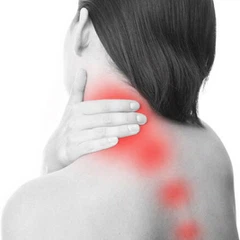Introduction
Spider veins and other vascular lesions are common clinical conditions, primarily caused by dilated microvessels, fragile vascular walls, or localized abnormalities in blood flow. They are aesthetically pleasing and sometimes accompanied by mild pain or itching. Traditional treatments, such as medication, surgery, or sclerotherapy, are invasive, slow to recover, and prone to recurrence. Laser therapy, however, is becoming a mainstream treatment option for vascular lesions due to its non-invasive, precise, and safe properties. This article will introduce the principles, effectiveness, and advantages of 980nm diode lasers in the treatment of spider veins and other vascular lesions.

Therapeutic Principles and Mechanisms of 980nm Diode Lasers
The core principle of 980nm diode laser treatment for spider veins and other vascular lesions is "selective photothermal therapy." The laser's specific wavelength precisely targets hemoglobin, converting light energy into heat. This affects only the abnormal vascular tissue, leaving surrounding healthy tissue largely unaffected, ensuring safe and effective treatment.

Selective Absorption and Energy Concentration
980nm laser energy is highly absorbed by hemoglobin, while absorption by the skin's surface is low. This allows the laser energy to be concentrated within the affected blood vessels, sparing the epidermis and surrounding tissue from heating.
01
Photothermal Effect Coagulation and Closure of Vascular Vessels
Laser irradiation rapidly heats hemoglobin, generating localized high temperatures that denature the proteins within the blood vessels and constrict the vessel walls. The heated diseased vessels gradually close and are absorbed by the body, leading to the gradual disappearance of spider veins.
02
Water Molecular Absorption Enhances Thermal Conductivity
In addition to hemoglobin, water molecules in tissue also partially absorb 980nm laser energy, enhancing the localized thermal effect and ensuring more even transmission of laser energy to the vessel walls. This dual absorption mechanism further improves treatment efficiency and shortens treatment time.
03
Deep Penetration and Multi-Layered Action
The 980nm laser has strong tissue penetration, capable of penetrating the dermis and shallow subcutaneous tissue. It can treat both superficial and medium-depth vascular lesions, making it suitable for various areas such as the face and legs.
04
Clinical Performance of 980nm Diode Laser for Vascular Lesions
The 980nm diode laser offers highly effective and predictable clinical results in treating spider veins and other vascular lesions, improving both patient appearance and symptoms.
• Closure of Abnormal Blood Vessels: The laser's heat causes blood coagulation within the affected vessels, shrinking the protein in the vessel walls. The vessels gradually close and are absorbed by the body, reducing visible vascularity.
• Improvement of Skin Appearance: After treatment, red or blue spider veins are significantly reduced, restoring a smooth, natural appearance to the skin.
• Symptom Relief: For patients experiencing mild pain, itching, or inflammation, treatment can reduce discomfort and improve quality of life.
• Compatibility with a Wide Range of Vascular Lesions: Suitable not only for spider veins, but also for treating smaller vascular abnormalities such as telangiectasias and cherry angiomas.
• Rapid Results: Most patients see significant improvement after one or two treatments, and some lesions can achieve optimal results in a single treatment.
Core Advantages of 980nm Diode Laser Machines
In clinical and cosmetic treatments, 980nm diode lasers, with their precise targeting and minimal invasiveness, provide a safe, comfortable, and effective solution for the treatment of spider veins and vascular lesions.
• Precise Targeting: The laser focuses precisely on the affected vascular area, minimizing impact on surrounding tissue. The Newangie 980nm Diode Laser for Vascular Removal features an adjustable spot size (0.2–0.5 mm), enabling precise treatment based on lesion size.
• Minimal Invasiveness: As a non-invasive device, the 980nm diode laser requires no skin incisions or injections, resulting in minimal trauma and a rapid recovery, allowing patients to quickly return to their daily lives.
• High Safety: The device utilizes contact cooling technology to effectively lower epidermal temperature and protect the skin from thermal damage. It is suitable for all skin tones, from Fitzpatrick I to VI, reducing the risk of burns.
• Easy Operation: The Newangie laser device is equipped with an intuitive LED display and intelligent control system, allowing clinicians to flexibly adjust parameters, improving operational fluidity and clinical efficiency.
• Fast and effective: Each treatment takes only 5-20 minutes, and can effectively treat multiple areas, greatly improving clinical work efficiency.

How to Optimize 980nm Diode Laser Machine Treatment
Of course, to ensure the safety and effectiveness of 980nm diode laser treatment, appropriate parameter settings, standardized operating procedures, and thorough pre- and post-operative management are essential.
• Treatment Parameter Selection: Laser power, pulse width, and spot size should be appropriately adjusted based on the type, depth, and diameter of the blood vessels. Lower energy and shorter pulses can be used for superficial vessels to minimize thermal damage to the epidermis; deeper or larger vessels require increased energy and pulse duration to ensure adequate coagulation and closure.
• Pre-operative Preparation: Before treatment, the skin should be cleansed and the lesion marked. Skin type and medical history should be assessed to rule out photosensitivity or allergies. If necessary, a small trial exposure can be performed to ensure safe treatment.
• Treatment Procedure: A step-by-step scanning technique can be used to avoid repeated exposures, ensure uniform photothermal effect, and minimize damage to surrounding tissue.
• Post-operative Care: Avoid direct sunlight and use restorative skincare products as needed to promote recovery and reduce hyperpigmentation.
• Contraindications and precautions: Pregnant women, those with photosensitivity diseases, or those who have recently taken photosensitizing medications should avoid treatment. It is contraindicated for skin infections or open wounds. All operations should be performed by professionals and strictly follow safety regulations.
Conclusion
The 980nm diode laser, with its precise energy control and excellent tissue penetration, is effective for treating spider veins and vascular lesions. Proper parameter setting and standardized operation ensure stable and predictable treatment results while ensuring safety.
As a professional medical aesthetic equipment supplier, Newangie is committed to providing high-performance, easy-to-use 980nm diode lasers to users worldwide. For more information or a quote, please contact us for customized equipment solutions.











